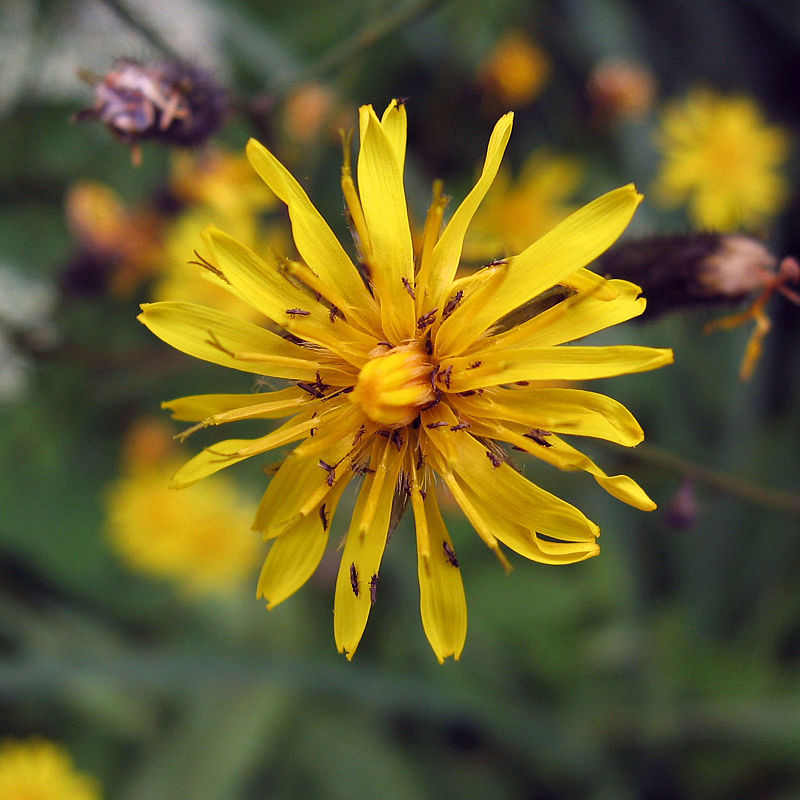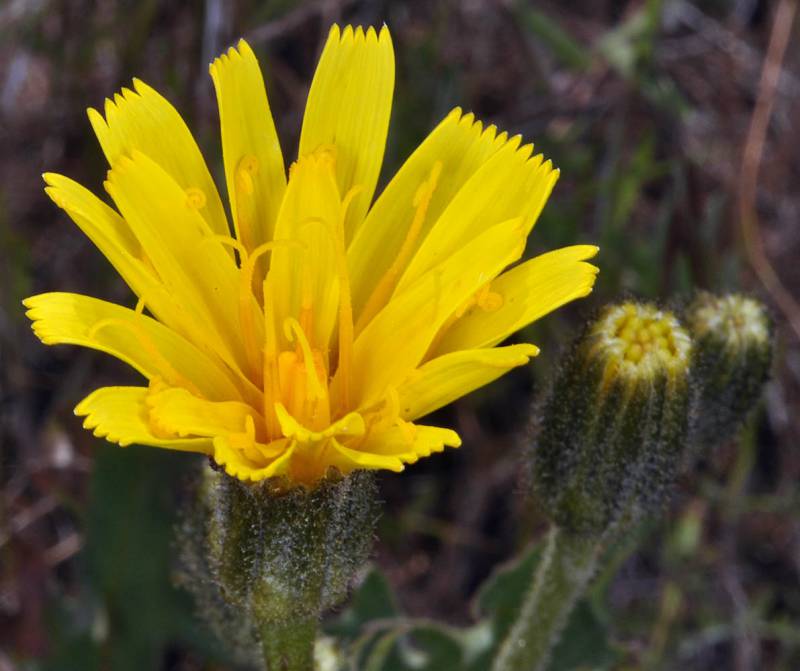Crepis tectorum
Crepis bakeri
annual hawksbeard, narrow leaf hawksbeard, rooftop hawksbeard
Baker's hawksbeard
Basal leaves petiolate, the blade lanceolate or oblanceolate, finely toothed to pinnately parted, up to 15 cm. long and 4 cm. wide; reduced cauline leaves sessile and auriculate, linear, often involute.
Leaves covered with short, often glandular hairs;
basal and lower cauline leaves 1-2 dm. long, pinnatifid with dentate segments, the mid-rib strongly reddish; upper leaves few and reduced.
Heads several to numerous, 30-70 flowered;
involucre 6-9 mm. high, its inner bracts 12-15, with fine hairs and sometimes with stalked glands as well, the outer bracts about one-third as long;
corollas all ligulate, yellow.
Heads 2-22, on stout peduncles which are expanded toward the apex, 11-40 flowered;
involucre 14-21 mm. high, lightly white-woolly and strongly glandular on short, stiff, pointed hairs; longer inner bracts 8-14;
corollas ligulate, yellow, about 2 cm. long.
Achenes 2.5-4.5 mm. long, dark reddish-brown, spindle-shaped, with 10 ribs.
Achenes brown or yellowish, narrowed above.
Crepis tectorum
Crepis bakeri
- Local floras:
BC,
CA,
OR,
WA
- Local Web sites:
CalFlora,
CalPhotos,
Flora NW,
PNW Herbaria
WildflowerSearch
iNaturalist (observations)
USDA Plants Database
- LBJ Wildflower Center
- SEINet
- Plants of the World Online
- Encyclopedia of Life
- Wikipedia
- Google Image Search
- Local floras:
CA,
OR,
WA
- Local Web sites:
CalFlora,
CalPhotos,
Flora NW,
PNW Herbaria
WildflowerSearch
iNaturalist (observations)
USDA Plants Database
- LBJ Wildflower Center
- SEINet
- Plants of the World Online
- Encyclopedia of Life
- Wikipedia
- Google Image Search



